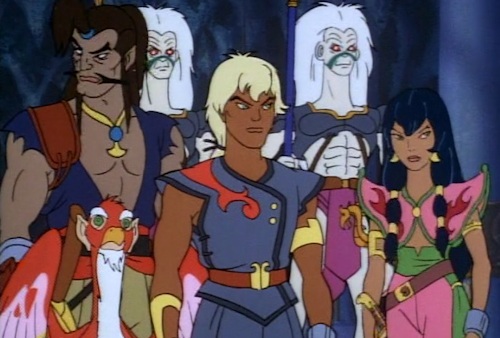I never really appreciated the nineties while I was in them. I remember having a distinct feeling that the previous decade was a hell of a lot cooler and I had the misfortune of having mostly missed it, it being over by the time I hit Kindergarten and was forming most of my long term memories. Sure there were things that I liked, things that came out of that decade that are still a part of my cultural DNA, but I had a sort of intentional distance from it, sure that the best music and the best culture had come and gone. Part of that may have been the angst of growing up, the rite of passage that is being too cool for whatever is given to you, part of it may have been that life is like “A Sunday Afternoon on the Island of La Grande Jatte,” difficult to appreciate from too close.
Whatever it was, it’s only now that I can look back on that time and realize that it did have its own soul, an attitude that was distinct to that time in the world, a flavor that is now gone for the most part, and I find myself sort of missing it. Life is weird like that.
We were being buried with fear, the Ozone layer had a whole in, AIDS was coming to get every one of us, the rainforest was being destroyed, space shuttles were blowing up, kids were coming to school with pipe bombs and bullets. At the same time, the new millennium was on the horizon, the internet was becoming ubiquitous, space stations were being built. The vast array of problems laid at our feet caused a sort of nostalgia for a simpler past that had left us behind, while the promise of the future suggested that just maybe we could fix those problems if we had the fortitude to pick up a hammer, or a shovel, or a bullhorn, or maybe just put down our weapons and see one another. Give the world a Coke.
Anyway, it was a weird time, we didn’t really know who we were, or where we were going, at least I didn’t, and born out of that feeling, as with every generation, was art. All of this is a longwinded way of saying that while I didn’t really appreciate it at the time, sometimes I wish I could go back, knowing then what I know now, but the wheel of time keeps turning, that is of course except for…
“Cadillacs and Dinosaurs” Created by Mark Schultz and Steven E. De Souza; Based on the comic book “Xenozoic Tales;” Starring David Keeley, Susan Roman, Bruce Tubbe, and Tedd Dillon; Originally aired September 18, 1993; Run time 22 minutes.
“Cadillacs and Dinosaurs” has perhaps one of the lamest names of any cartoon from the nineties but a pretty entertaining premise, especially if you’re like me and a sucker for pretty much anything with dinosaurs in it.
It takes place in the 26th century, humanity has spent hundreds of years underground after a series of environmental catastrophes (potentially due to the rogue second moon whipping around Earth for no reason) and when they return to the surface they discover that previously extinct species have reclaimed the world, including dinosaurs.
A great city is built in the sea run by a council of corrupt governors, pockets of survivors are still emerging in the wilderness and The Mechanics, a group of environmental warriors is committed to finding balance in their new setting. One such Mechanic is the protagonist Jack Tenrec who, along with his buddy Mustapha Cairo, sort of love interest Hannah Dundee, and pet Allosaurus Hermes, fight the forces of Governor Wilhelmina Scharnhorst and poacher Hammer Terhune to maintain the balance of the Machinataeo Vitae, the machine of life.
Jack also receives advice from a race of sentient bipedal reptiles called Griths by way of Hobb, who is able to communicate with Jack and the dinosaurs telepathically.
The animation style and production of “Cadillacs and Dinosaurs” were able to preserve the feel of the late eighties/early nineties comic book style from which it was lifted by way of artistic design and changing the screen ratio to mimic panels at strategic moments.
The series so perfectly embodies the spirit of the nineties by way of looking to the future while also holding onto the recent and distant past. Through its admittedly silly exterior it commentates on the nature of the human experience by suggesting that even the future, even in the face of a near miss extinction, we might still struggle with the same issues of togetherness and balance with our environment that plague us today.
“Cadillacs and Dinosaurs” probably won’t go down in history as a great piece of art or social commentary, but it is a great example of the way we were feeling at the time it was made, the things that weighed heavily on our minds, plus it has dinosaurs.
